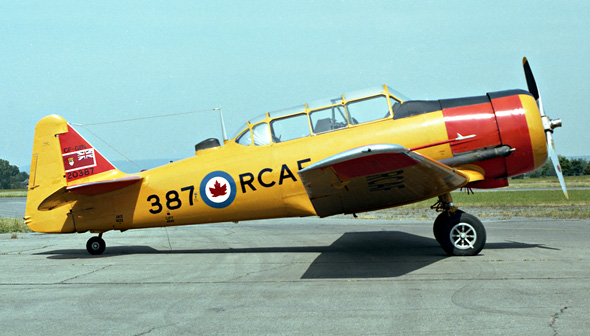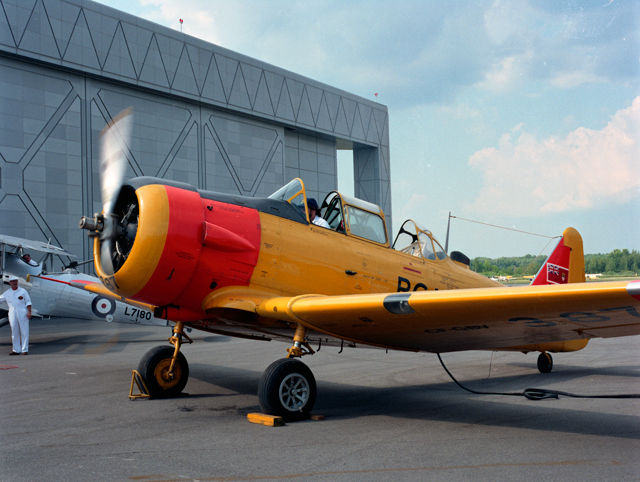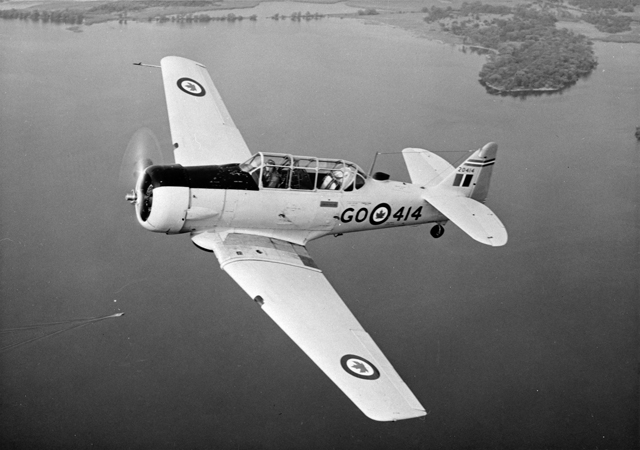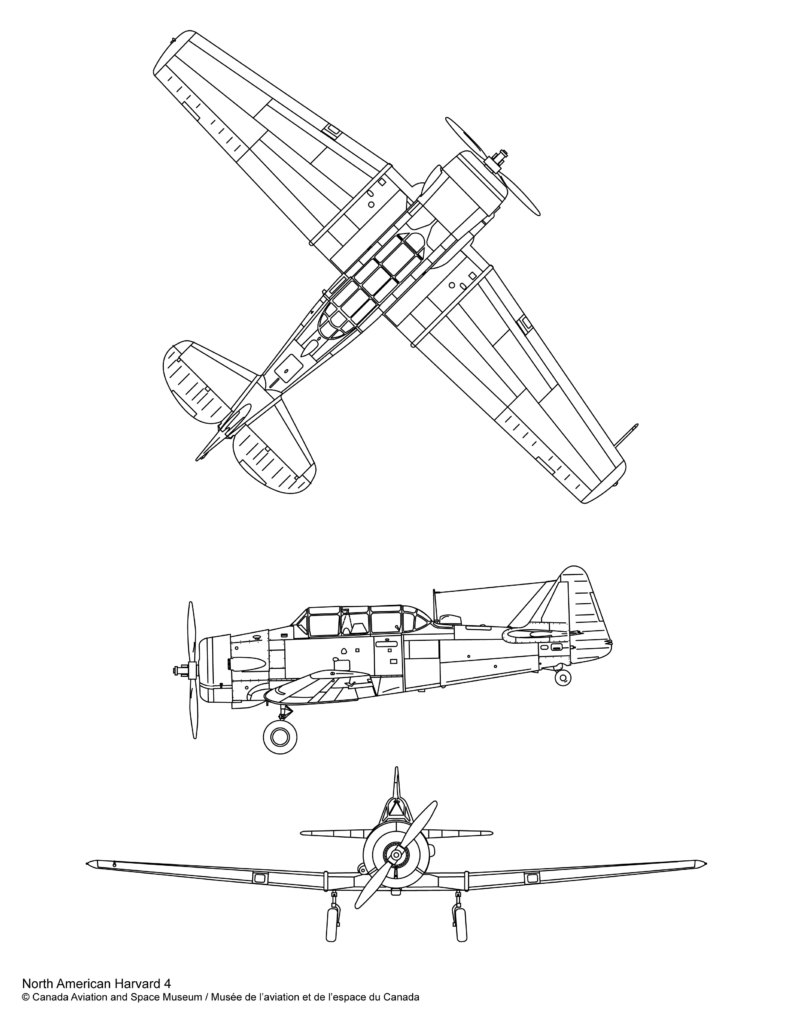North American Harvard 4
Highlights
- An American single-engine trainer designed by North American Aviation Incorporated and produced between 1937 and 1953
- Known as the AT-6 Texan by the U.S. military, for whom it was designed
- Used to train nearly all U.S. and British Commonwealth fighter pilots from 1940 to 1955
- Early versions used in Canada during the Second World War under the British Commonwealth Air Training Plan
- Production rated highest as a Canadian-built aircraft; Noorduyn Aviation Limited and Canadian Car & Foundry Limited produced 3,350 Harvards during and after the Second World War
- Operated in the 1950s by Royal Canadian Air Force flying schools in Western Canada
- One of the most famous and successful trainers of all time
- First flight was in 1940 (AT-6)

Artifact no.: 1967.0679
Manufacturer: Canadian Car and Foundry Company Ltd.
Manufacturer location: Canada
Manufacture date: 1952
Acquisition date: 1964
Registration number: 20387 (RCAF)
History
One of the best advanced training aircraft ever built, the Harvard became a mainstay of the British Commonwealth Air Training Plan. Harvard IIBs were first ordered from Noorduyn in Montreal in January 1940. Noorduyn eventually built 2 800 Harvards for the RAF and RCAF. Canadian Car and Foundry made 550 Mk.4s for Canada and the United States in the 1950s. The Mk.4 had an improved cockpit canopy and greater fuel capacity.
The Harvard must be considered one of the outstanding aircraft of Second World War and the early postwar years. From 1940 to 1955, nearly all American and British Commonwealth pilots received some training on Harvards. Strong yet unforgiving, requiring a delicate touch to keep straight during landing and take-off, it was an ideal training airplane. Canada built more Harvards than any other aircraft, with a total of 3 350 produced. In anticipation of a possible aluminium shortage, a wooden rear-fuselage and set of wings were developed and built, but not produced. Gunnery trainer and target tow versions were also developed but never produced. Skis were produced but never installed because a strengthened undercarriage was required.
Current location
Reserve Hangar, Canada Aviation and Space Museum
Provenance
Transfer from the Royal Canadian Air Force
This Harvard was manufactured by Canadian Car & Foundry Limited in Fort William, Ontario in 1952. The aircraft was accepted by the RCAF in September of that year and first served at No. 3 Flying Training School at Claresholm, Alberta. After a brief storage period, the Harvard was transferred to No. 2 Flying Training School at Moose Jaw, Saskatchewan in November 1958. It was used here until July 1959, when it was stored at Lincoln Park in Calgary, Alberta. The Harvard was retired and transferred to the Museum in March 1964. It was last flown as part of National Aeronautical Collection Day at Rockcliffe airport in June 1973.
Technical information
- Wing span
- 12.8 m (42 ft 1/2 in)
- Length
- 8.8 m (28 ft 11 in)
- Height
- 3.5 m (11 ft 8 1/2 in)
- Weight, empty
- 1,812 kg (3,995 lb)
- Weight, gross
- 2,375 kg (5,235 lb)
- Cruising speed
- 225 km/h (140 mph)
- Max speed
- 290 km/h (180 mph)
- Rate of climb
- 396 m (1,300 ft) /min
- Service ceiling
- 6,710 m (22,000 ft)
- Range
- 1,145 km (710 mi)
- Power plant
- one Pratt & Whitney R-1340-AN-1 Wasp, 600 hp, radial engine


